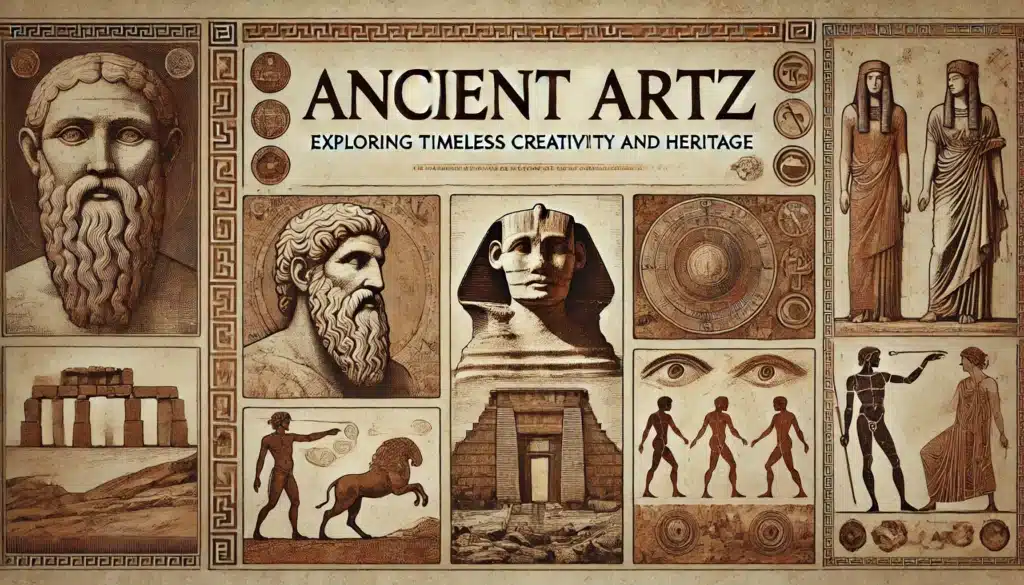Ancient artz is a captivating glimpse into the minds and cultures of early civilizations. From intricate cave paintings to awe-inspiring sculptures, these creations are more than just artifacts—they are a testament to humanity’s enduring creativity and innovation.
Why is this subject important? Ancient artz helps us understand the social, spiritual, and technological evolution of civilizations, offering insights into the lives and beliefs of our ancestors.
Did you know? The oldest known artwork dates back over 70,000 years and was carved on a piece of rock in Blombos Cave, South Africa.
What Defines Ancient Art?
Ancient artz refers to visual and material culture produced from prehistoric times through the early Middle Ages. It includes forms like:
- Sculptures: From small figurines to monumental statues.
- Paintings: Cave art, murals, and frescoes.
- Pottery: Both utilitarian and decorative.
- Architecture: Temples, tombs, and monuments.
Key Characteristics of Ancient Art
- Symbolism: Often tied to religion, nature, or daily life.
- Materials: Stone, clay, metal, and natural pigments.
- Functionality: Created for rituals, storytelling, or utility.
Example:
The Venus of Willendorf, a small limestone figurine from 28,000 BCE, symbolizes fertility and abundance.
Key Civilizations and Their Art
Egyptian Art
Egyptian art revolved around the afterlife and divine power. Masterpieces like the Great Sphinx of Giza and the intricate tomb paintings in the Valley of the Kings display a deep connection between art and spirituality.
Famous Example:
The bust of Nefertiti, crafted in 1345 BCE, exemplifies Egyptian ideals of beauty and craftsmanship.
Mesopotamian Art
Known as the “Cradle of Civilization,” Mesopotamia introduced relief sculptures, monumental ziggurats, and law codes inscribed on stone.
Iconic Artifact:
The Code of Hammurabi Stele—a 7-foot basalt pillar—is one of the earliest written legal systems.
Greek and Roman Art
- Greek Art: Celebrated human perfection and harmony, as seen in the Parthenon sculptures.
- Roman Art: Focused on realism and engineering, best exemplified by the Colosseum and lifelike busts of emperors.
Asian Contributions
- China: The Terracotta Army, created during Emperor Qin Shi Huang’s reign, reflects military strength and afterlife beliefs.
- India: Buddhist sculptures like the Great Stupa of Sanchi showcase intricate carvings and symbolic architecture.
The Purpose and Symbolism in Ancient Art
Ancient artz wasn’t created just for aesthetic purposes; it often served functional and symbolic roles:
- Religious Significance: Egyptian tomb art guided the deceased to the afterlife.
- Political Power: Roman emperors used statues to assert authority.
- Daily Life: Greek pottery depicted everyday scenes like feasts and athletic competitions.
Quote:
“Art is the signature of civilizations.” – Beverly Sills
Preservation and Legacy
Preservation of ancient artz is crucial for cultural continuity. Many pieces survived through archaeological efforts, while others were lost due to war, theft, or environmental factors.
Impact on Modern Culture:
- Corinthian columns influence contemporary architecture.
- Ancient mosaics inspire modern design trends.
Table: Preservation Techniques Then and Now
| Technique | Ancient Methods | Modern Innovations |
| Material Protection | Natural coverings (e.g., sand) | 3D imaging and AI tools |
| Restoration | Primitive repairs | Advanced laser cleaning |
| Documentation | Stone inscriptions | Digital archives |
The Future of Studying Ancient Art
Technological Advances
- 3D Modeling: Digitizing artifacts for global access.
- AI Restoration: Predicting and recreating missing details.
Challenges
- Climate Change: Damaging fragile relics.
- Looting and Smuggling: Threatening cultural heritage.
Future Trends:
Interactive museum exhibitions and virtual tours are making ancient artz more accessible to the public.
FAQs
What Are Examples of Ancient Art?
Examples include the Venus of Willendorf, Lascaux Cave Paintings, the Terracotta Army, and the Great Sphinx of Giza.
What Types of Drawings Were Created in Ancient Art?
Drawings depicted nature, human figures, mythological themes, and symbolic patterns on pottery and cave walls.
What Are Some Well-Known Ancient Paintings?
Famous paintings include the Lascaux Cave murals, Akrotiri Frescoes, Ajanta Caves murals, and the Tomb of Nebamun art.
What Is the History of Ancient Art?
Ancient art began with prehistoric cave drawings and evolved into Neolithic pottery, Egyptian monuments, and classical sculptures.
What Are the Main Characteristics of Ancient Art?
It often features religious symbolism, natural themes, use of durable materials, and a focus on storytelling or rituals.
What Are Examples and Descriptions of Ancient Art?
Examples include Egyptian hieroglyphs representing daily life, Greek pottery with mythological scenes, and Roman mosaics with intricate designs.
What Are the Different Types of Ancient Art?
Types include sculpture, painting, architecture, pottery, and textiles from ancient cultures like Mesopotamia and China.
Who Were the Notable Artists of Ancient Art?
While most ancient art was anonymous, known contributors include Egyptian artisans, Greek sculptors like Phidias, and Roman mosaicists.

